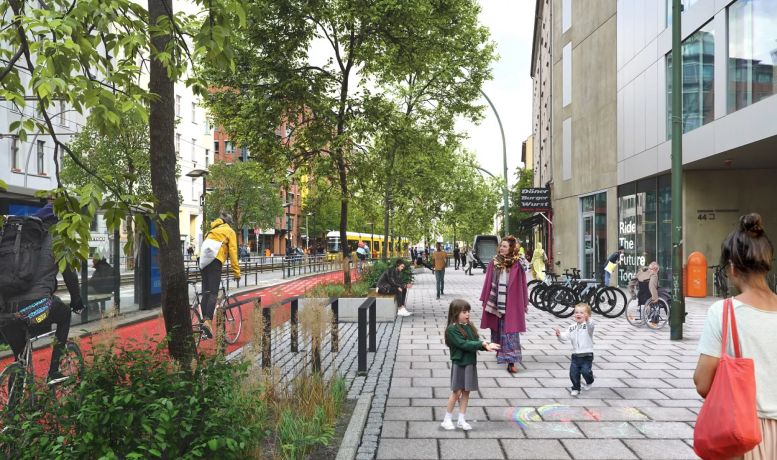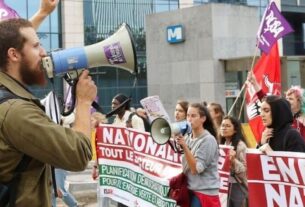Cities are the world remade by society. So why are they so inhospitable? The high cost of living, air and noise pollution, the many barriers to accessibility, the scarcity of communal gathering places and green space, the high rate of traffic accidents, washrooms and drinking water for customers only, narrow or no sidewalks — all of this adds up and imbues cities, which are home to over 55 percent of humanity, with a hostility towards human well-being. Why are they like this?
Cities are not only the product of human imagination and ingenuity, but also of the present socio-economic system, capitalism. This undemocratic system puts decision-making powers almost entirely in the hands of capitalists. It is no surprise, therefore, that cities are designed primarily to serve the interests of the wealthy — interests that are usually opposed to poor and working people’s needs.
Capitalists and their friends in government decided to design and build the urban landscape around the cars they sell us. Across the US, General Motors, Firestone Tire and some oil companies bought up electric streetcar companies only to rip up the lines and replace them with GM-made busses and cars. This was good for corporate profits, but bad for the poor and working people who actually have to live in these cities and navigate its traffic jams. In Canada, there are between three and five paved parking spots for every vehicle, and between 50 and 60 percent of the land in many downtowns are reserved for cars. Who would ever vote for that?
Profit-hungry property developers also imposed on poor and working people high-rise towers that blot out the sun, and suburban sprawl (with expensive infrastructure provided by the city government), which isolates people and increases their reliance on cars and other consumer goods. Both replaced small houses and low-rise apartments — a medium density and much more people-friendly landscape.
Capitalists have no desire to encourage community in cities as organized working-class communities are a threat to their economic and political power. There are myriad ways that urbanization has alienated workers from each other, creating a society of strangers and thereby suppressing workers’ movements. This is not an accident. Nor was it inevitable. And it can be undone.
Socialist Cities
A socialist society would level class structures, ending both ghettoization and gentrification. Ending the rule of the capitalists would finally make true democracy possible, meaning that poor and working people could start transforming cities into places where they could thrive.
Public transit could be massively expanded, ending urbanites’ reliance on cars and, in turn, reducing the need for parking spaces. This would free up room to build affordable housing, create green spaces and plant trees, install bike lanes, and widen sidewalks. Traffic congestion (and road rage) would be eliminated; children would be safe to play on residential streets; noise pollution would be greatly reduced; front porches would become desirable; social interactions between neighbours would be normal, fostering a sense of community; people’s activity levels would increase, and social isolation would decrease, greatly improving their physical and mental health. Green cities would better cope with climate change, while reduced car use would cut CO2 emissions.
Facilities — parks, schools, health, community, sport and cultural centres, and so on — could also be set up in each community to reduce travel times. Streets would be livelier. Spaces would be public, not privately owned.
Socialist cities would change humanity. Just as people shape cities, cities shape people as they dwell in them. Attitudes, beliefs, and customs would all change for the better. Cities would be safer; trust would increase. These insights bring new meaning to the activist chant, Whose Streets? Our Streets! which is often heard when people assemble to express solidarity and protest capitalism’s many oppressions on space normally reserved for cars. It is a declaration of poor and working people’s right to the city; it is a demand for people to control not just where they live, but also who they are.




